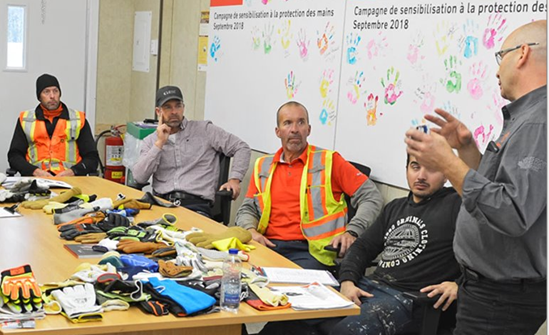Every year, millions of workers get injured on the job, and a significant number of reported occupational injuries are hand related. The good news is that hand injuries are the number one preventable industrial accident across all industries. So, if hand injuries are so preventable, why are they so common? And how have some companies reduced their hand injuries by 50%, even 90%?
Start at the Top
Workers can tell if safety is a real priority. If your company is committed to building a culture of safety, start at the top. When it begins with management, it empowers everyone, from safety officers and managers to every person in the workplace.
Learn what the best companies do
Companies that have implemented a successful hand safety program engage and involve their workers. They realize that workplace injuries not only have a physical and mental cost associated for the workers but are also expensive in terms of lost productivity and wages. And so, preventing these injuries with a thorough hazard assessment, the right PPE, and the right training is less costly than the injuries themselves.
Achieve Team Buy In
The true potential of a good hand safety program can only be realized when everyone participates. So, what works?
- Telling stories. Make stats personal! People respond to stories of practical examples. Stories provide a human face, not just a metric. Instead of stating the number of injuries, maybe explain how an injury impacted a family.
- Start Small. If you start small, you see results faster. This helps people to buy into a cause. Then you can slowly ramp up your safety efforts from there.
- Positive Peer Pressure. Social rewards in the form of praise and recognition for safe behaviors are far more effective than financial rewards, especially in a public setting.
- The IKEA effect. People place far more value on things they have helped build. They feel a sense of ownership if they are part of the solution.
Safety program tips:
- Don’t keep useless stats! Use detailed stats that allow actionable steps to keep workers safer and avoid future injuries.
- Stay away from non-credible and dull trainers. A good trainer uses feedback to re-adjusts the training program suitable for your environment.
- Avoid poor quality PPE. It ends up costing you more in the long run and is harmful to workers’ safety.
- Don’t overlook cultural issues. Workers from different parts of the world have a different mindset about safety. Don’t be dismissive of these concerns.
- Appreciate the diversity of your workforce and try to bring everybody into the conversation.
- Some of the best companies use gamification to award positive activities like wearing PPE and attending training sessions.
Remember! The best companies work toward ZERO accidents as a goal. For a more in-depth discussion on building an effective hand safety program to reach your goals, get your free copy of the hand safety book, REThinking Hand Safety, by author and Vice President of Superior Glove, Joseph Geng. REThinking Hand Safety offers practical and effective techniques to improve your hand safety program—techniques that come with years of experience and expertise that can be applied immediately for results. Request your free copy here.

